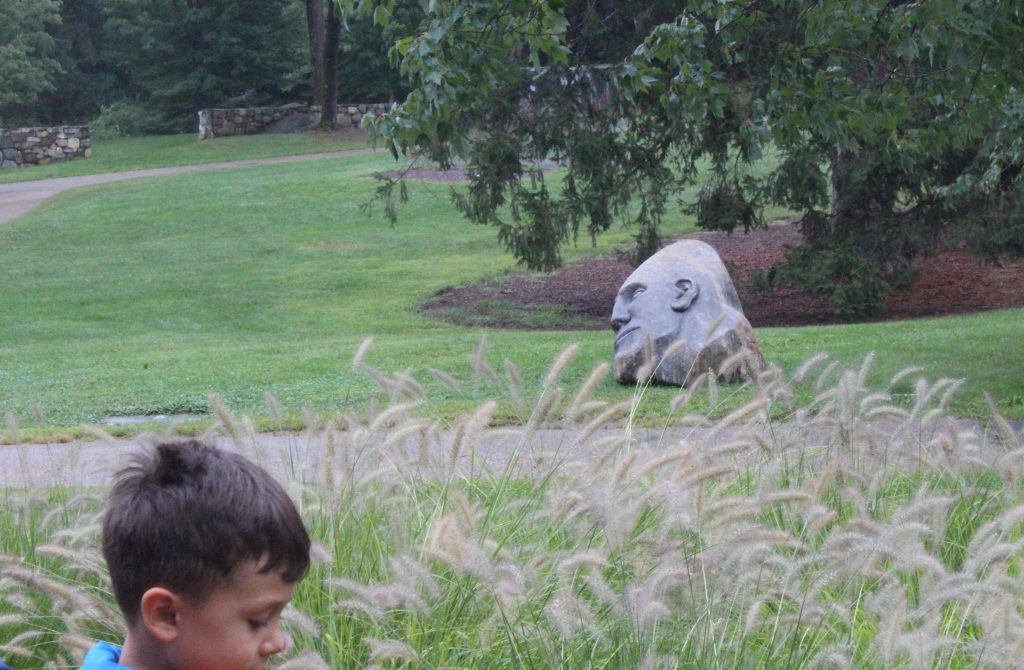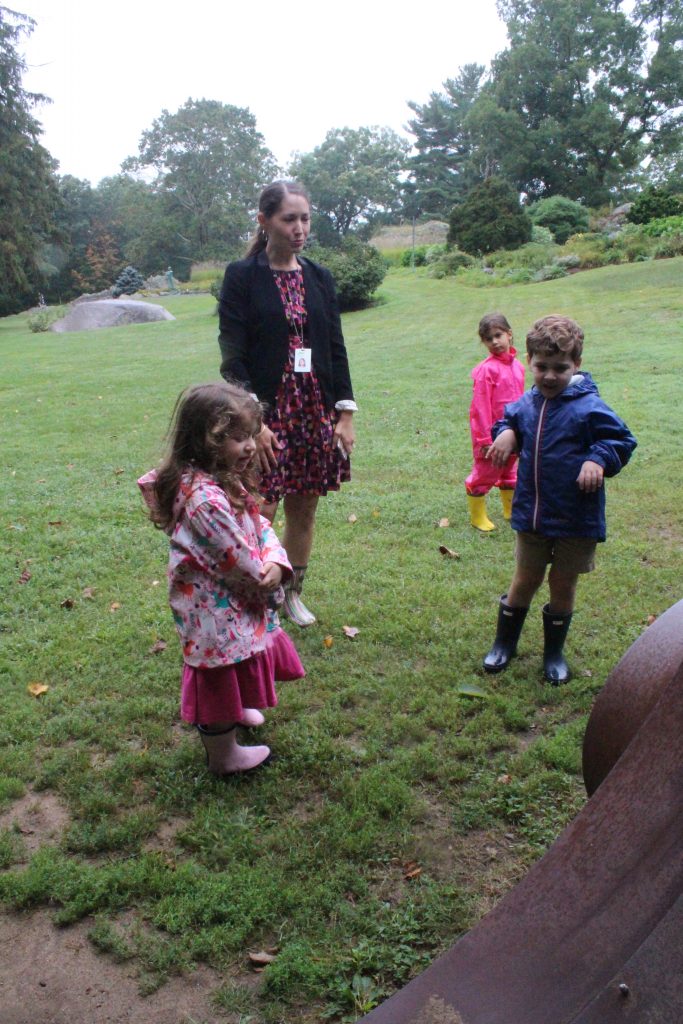This week we introduced the children to working in a small group. Small groups serve a myriad of purposes in the studio. For example, this more intimate work invites reserved voices to be heard, fosters unexpected relationships and builds community, all of which we deem crucial to a vibrant learning community.
In groups of seven and eight we expanded the walls of Studio Red by venturing into the sculpture park. We introduced the children to Emily Silet, our Learning and Engagement liaison. She then travelled with us to explore and wonder around the questions,
"What is a sculpture park?" and "What is a sculpture?"
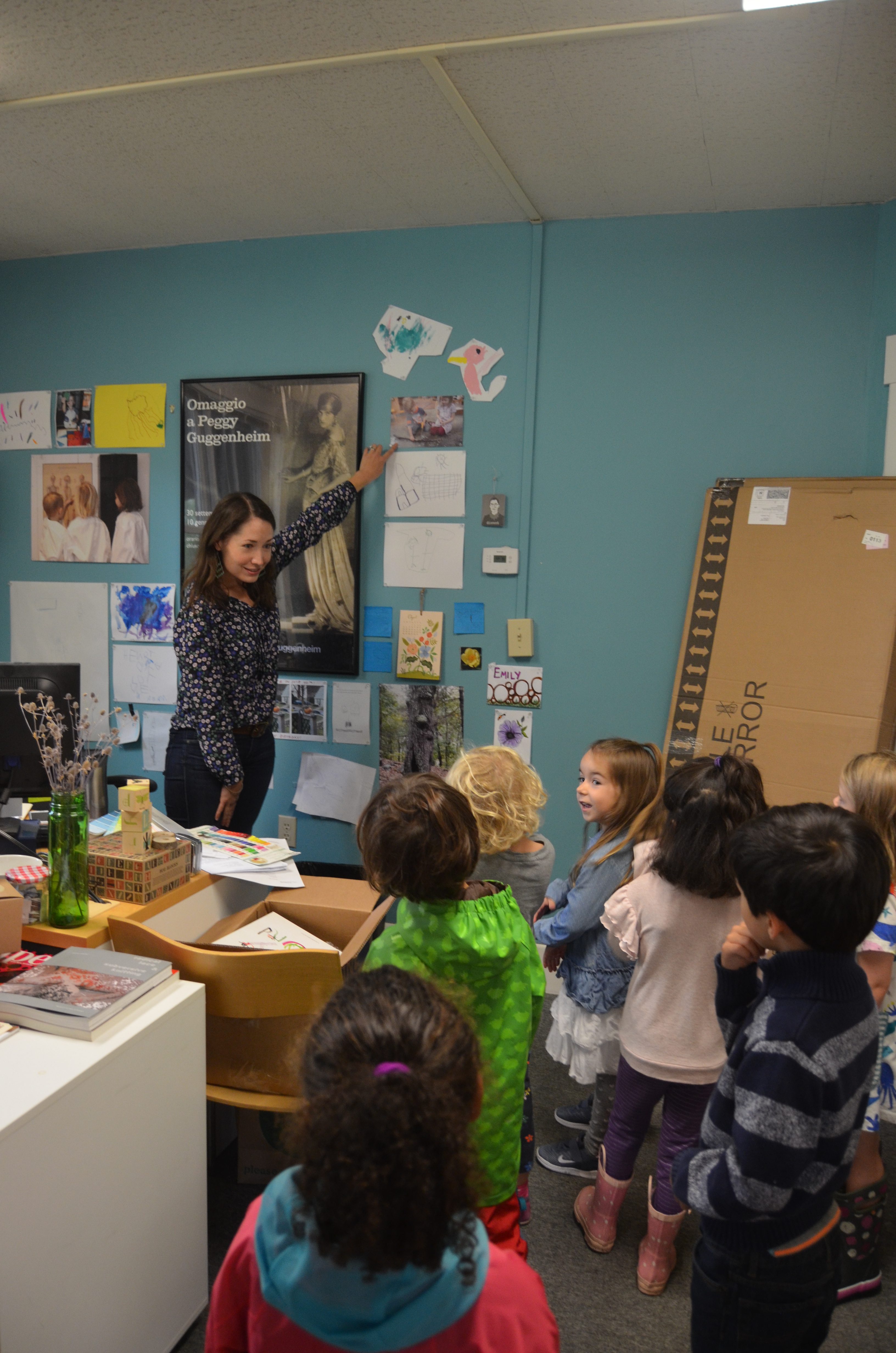
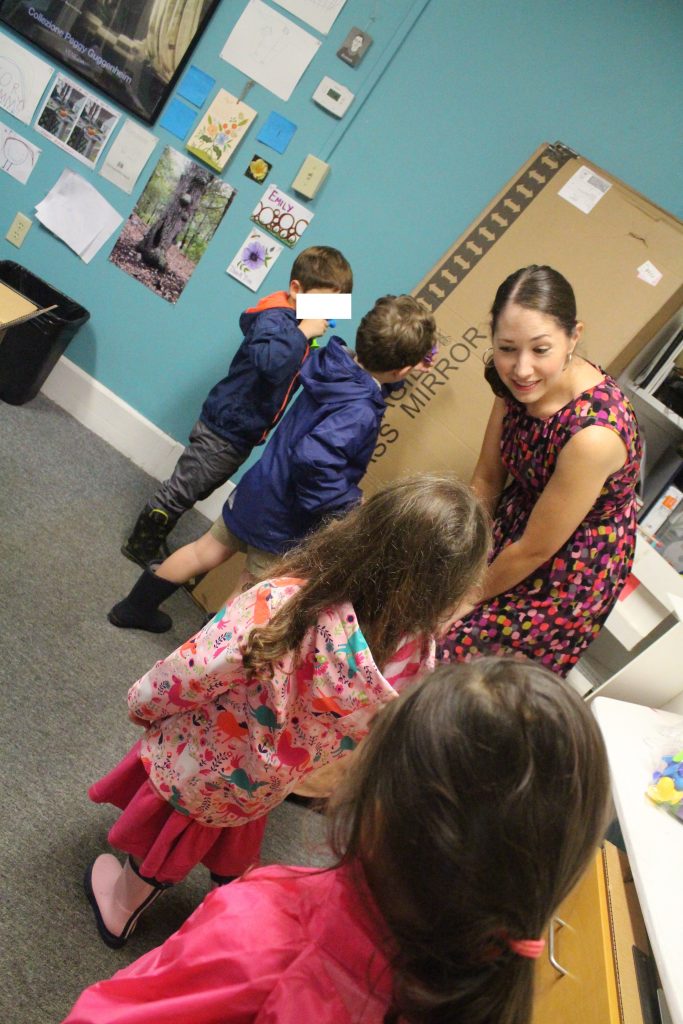
A sculpture park is a park full of sculptures! Elliott
Like a playground is a park. Eleanor
Where we play! Parker
A park is like where we take my dog, Juno. No playground, just sidewalk and benches. Helen
And trees. Eleanor, responding to Helen.
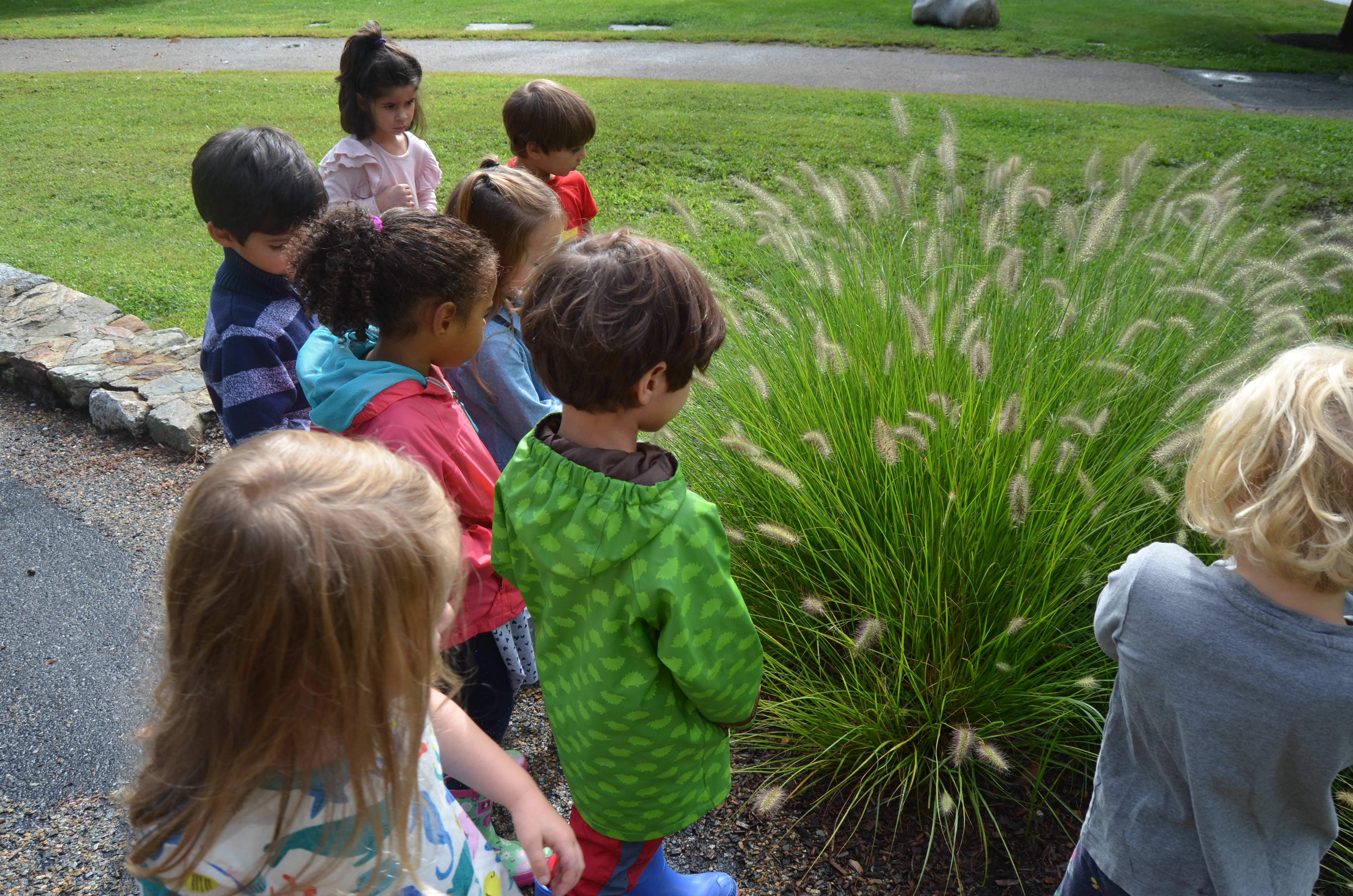
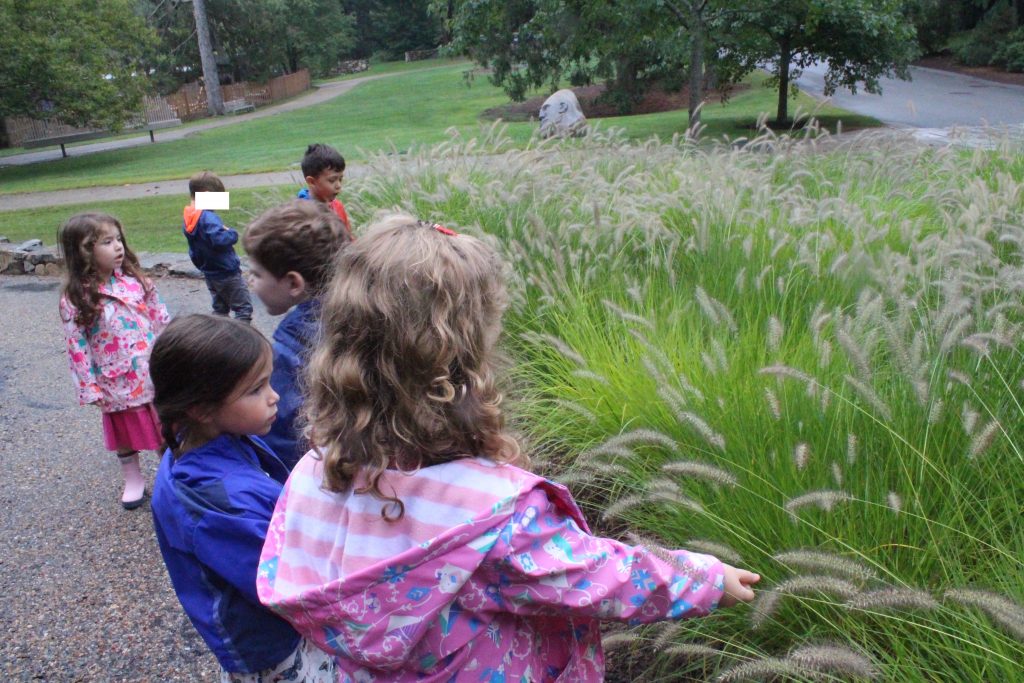
That's not a sculpture, that's a plant! (All)
But we can pretend it's a sculpture that we can touch. Violet
That interesting grass is a plant. It is not a sculpture. Elliott
As we moved through a small portion of the park with Emily, we continued to refine our definition of a sculpture through words, gestures and movements.
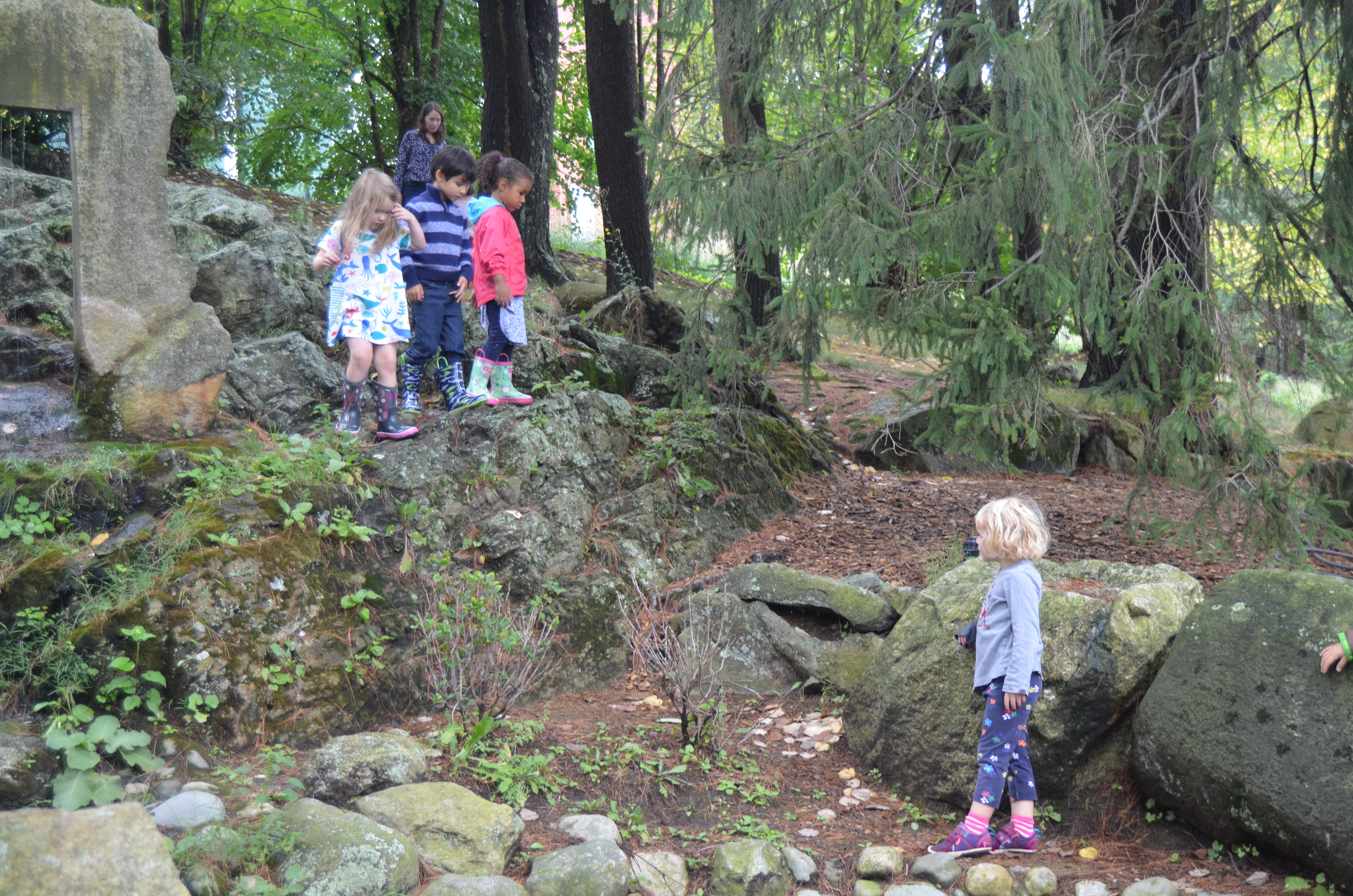
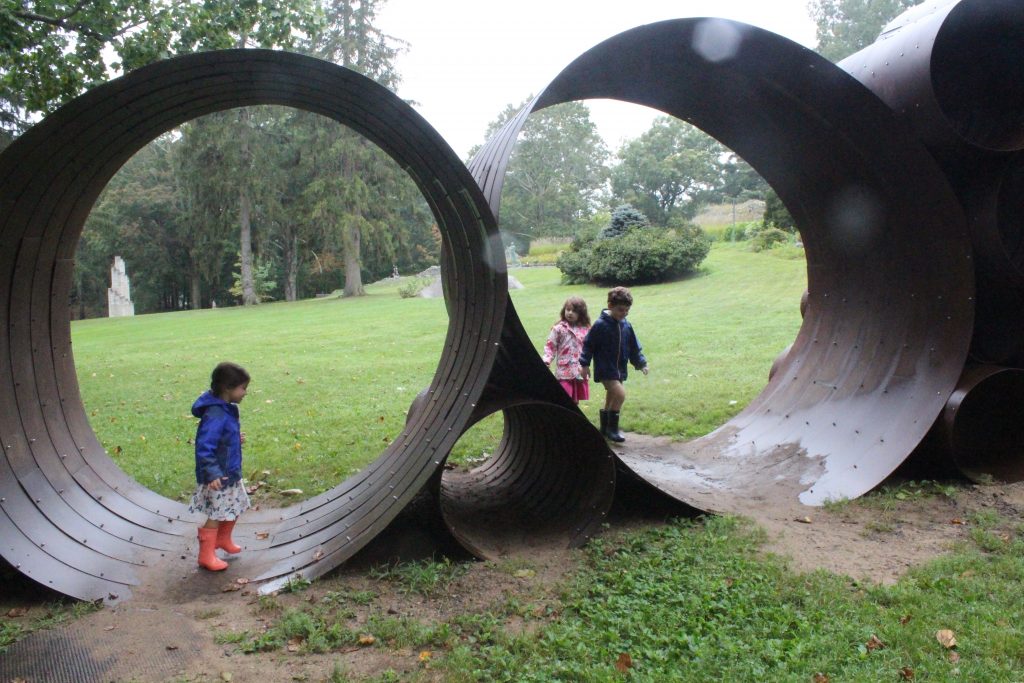
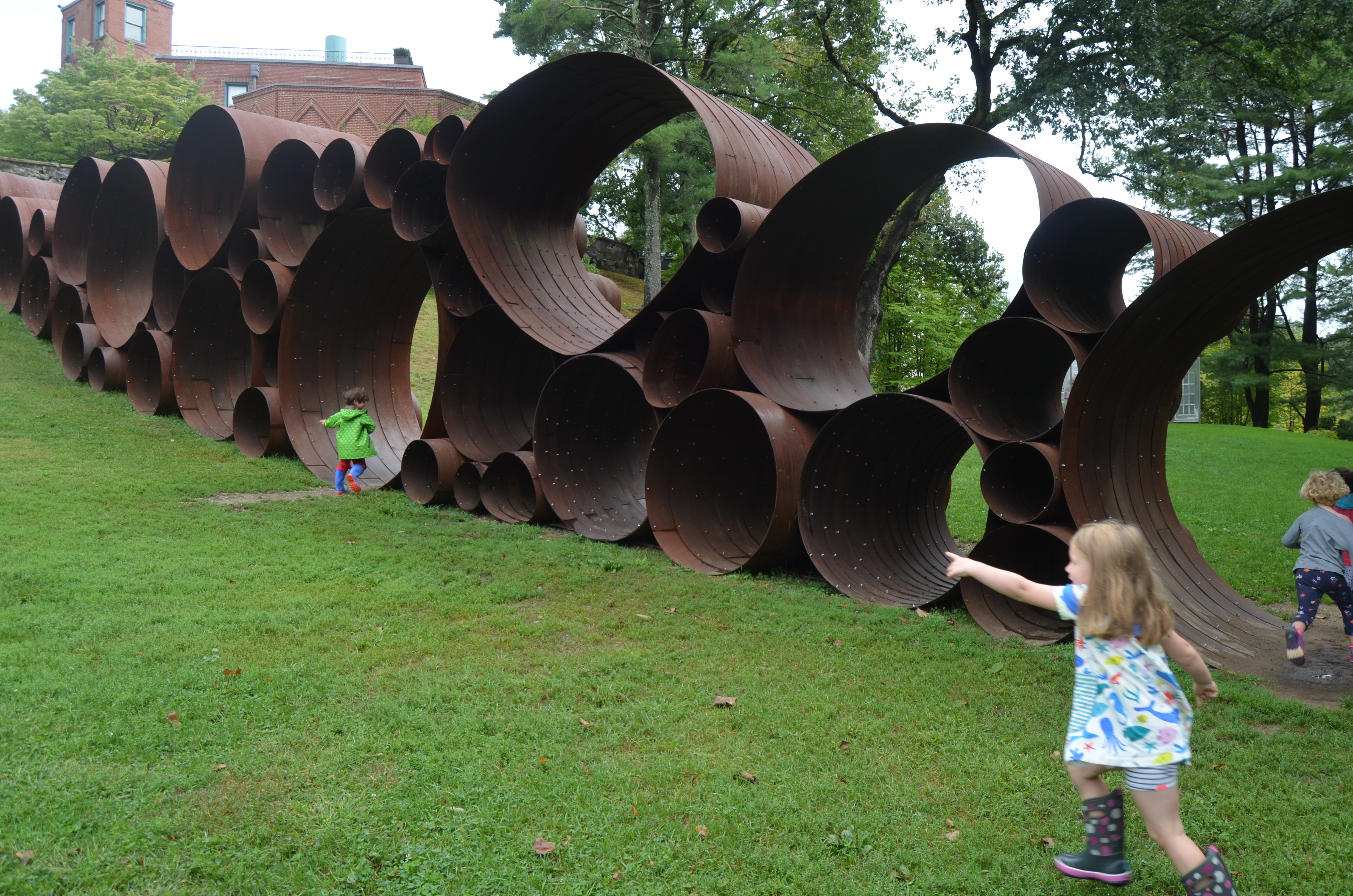
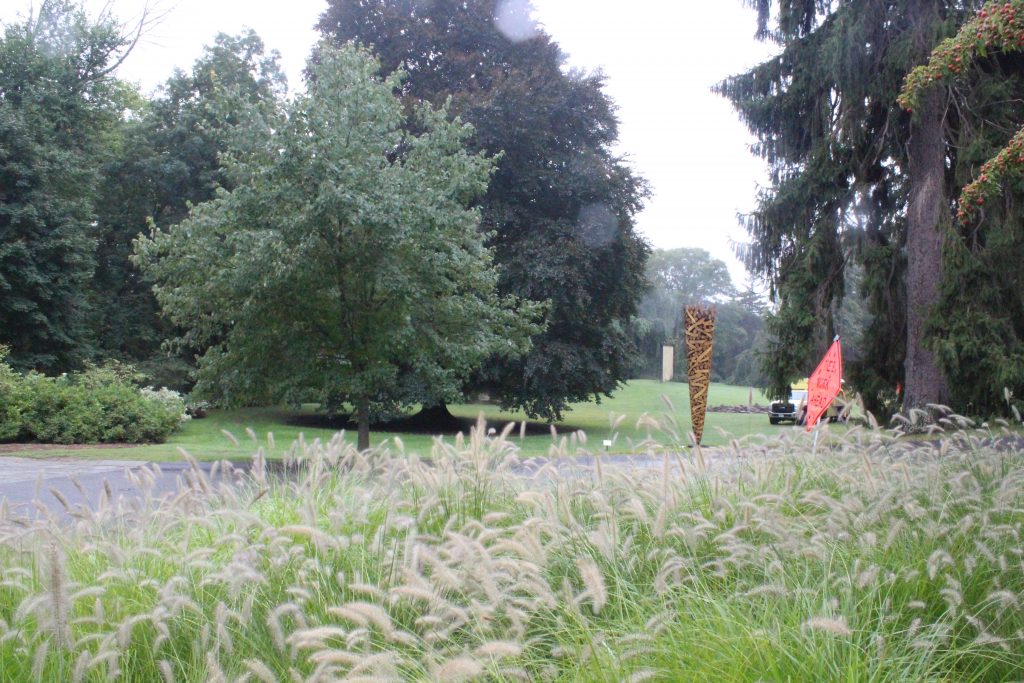
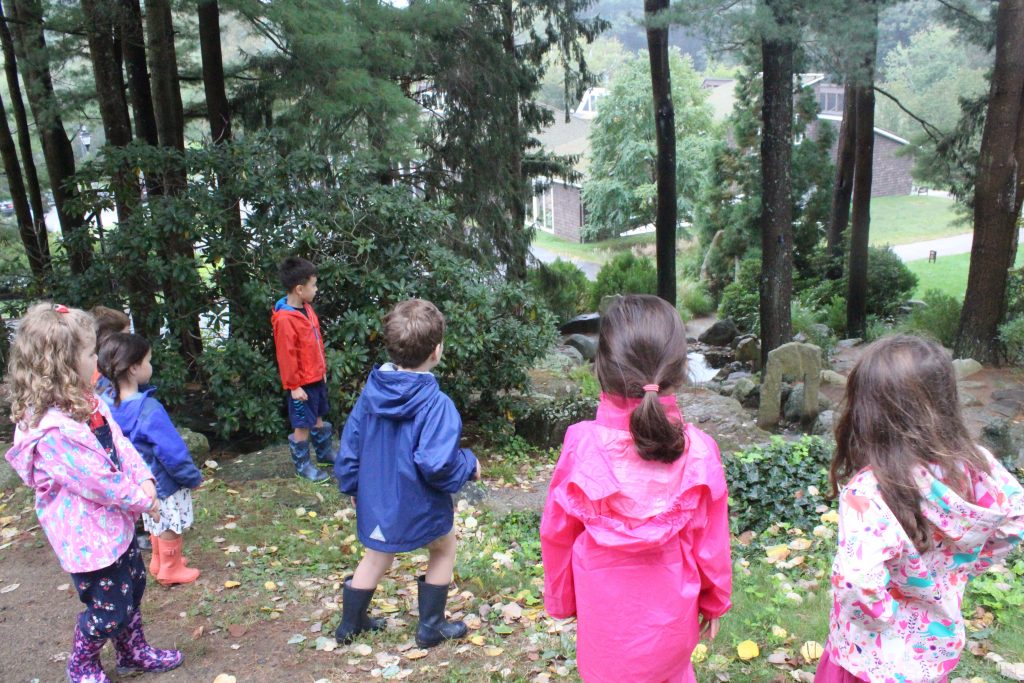
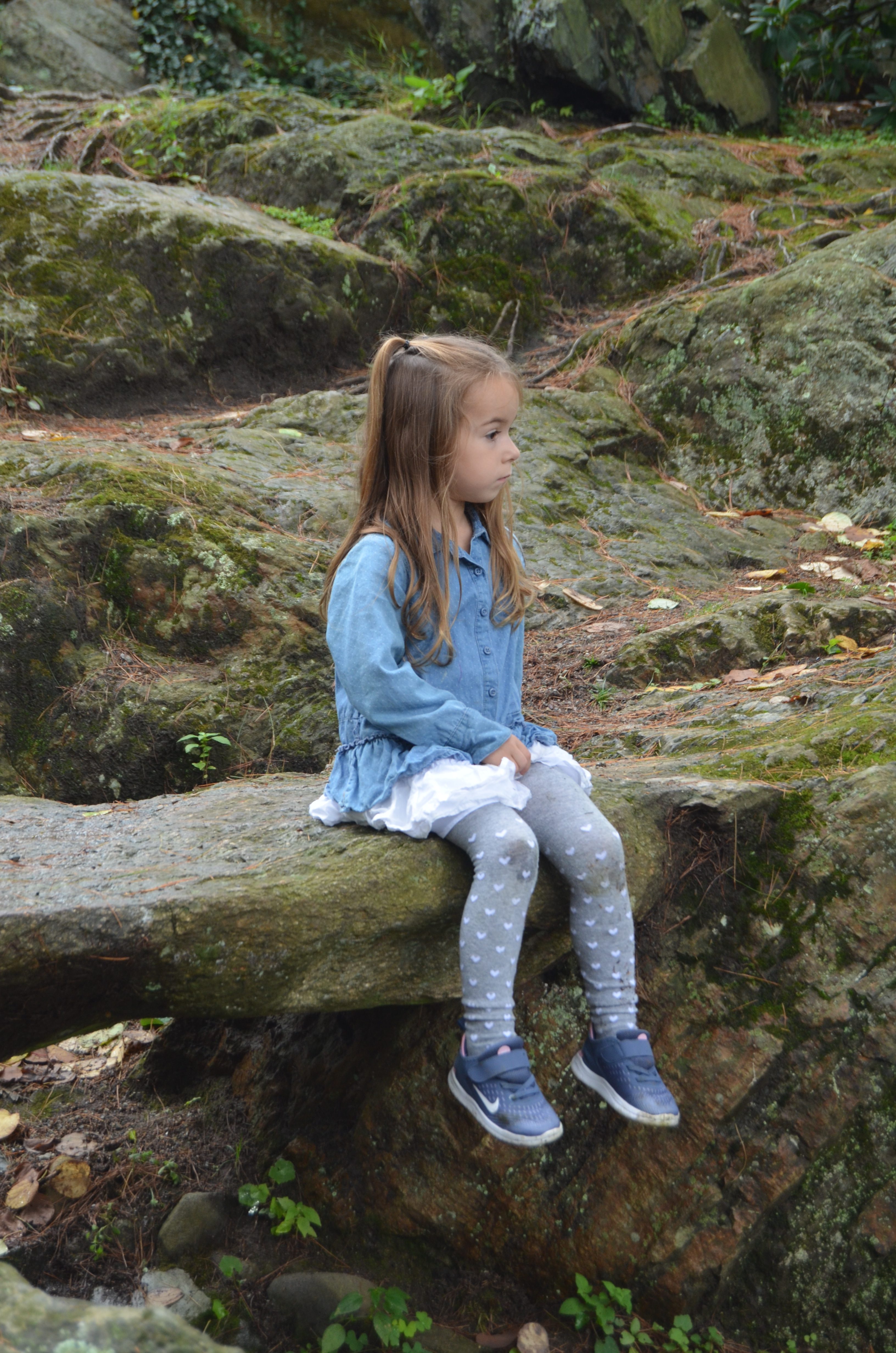
A sculpture is a thing you can’t touch.
Why can’t we touch?
You make a sculpture. Like you put it on the ground where there is no sculpture.
It’s a design.
(You) go in the sculpture to get to the other space.
I really want to make my own sculpture with things.
This is not a sculpture. (referring to Raingates)
(To be a sculpture) all you have to do is stay really really still. Like a statue.
It is a sculpture because somebody made it.
It’s a sculpture because it’s electric.
The doors are sculptures cuz they’re made of glass.
